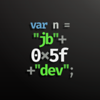Looking for info resources
Hi there, I was wondering if any of you know any good etc with info about medieval or celtic music playing methods, scales etc... Would be very gratefull with any help :-) Will
Medieval scales are based on the church modes:
Ionian- major scale (C to C on the piano playing only white keys)
Dorian- minor-like scale (D to D on the piano playing only white keys)
Phrygian- minor-like scale (E to E in the same manner as listed above)
Lydian- major-like scale (F to F)
Mixolydian- major-like scale (G to G)
Aeolian- minor-like scale (A to A)
Locrian- diminished-like scale (B to B)
(Please note that my key assignments do not match the keys selected in the picture. All of the modes in the picture show how each mode would look always starting from "C".
Here is a picture of each scale:

Locrian was almost never used because the harmonies it created were seen as either un-usable by the musicians and composers of this period or actually seen as "evil" by the church. Each mode makes changes to the typical major or minor scale we know and love today. For example the lydian raises the 4th scale degree and the mixolydian lowers the 7th scale degree.
While I'm no expert on Celtic music, much of it uses the same modes but the rhythm is a vital part of the genre's identity. Much of the music is very syncopated and usually falls into 6/8 time or a odd meter. Celtic music also seems to utilize skips and leaps and embellishments much like the mordants and embellishments used in the baroque period.
Ionian- major scale (C to C on the piano playing only white keys)
Dorian- minor-like scale (D to D on the piano playing only white keys)
Phrygian- minor-like scale (E to E in the same manner as listed above)
Lydian- major-like scale (F to F)
Mixolydian- major-like scale (G to G)
Aeolian- minor-like scale (A to A)
Locrian- diminished-like scale (B to B)
(Please note that my key assignments do not match the keys selected in the picture. All of the modes in the picture show how each mode would look always starting from "C".
Here is a picture of each scale:

Locrian was almost never used because the harmonies it created were seen as either un-usable by the musicians and composers of this period or actually seen as "evil" by the church. Each mode makes changes to the typical major or minor scale we know and love today. For example the lydian raises the 4th scale degree and the mixolydian lowers the 7th scale degree.
While I'm no expert on Celtic music, much of it uses the same modes but the rhythm is a vital part of the genre's identity. Much of the music is very syncopated and usually falls into 6/8 time or a odd meter. Celtic music also seems to utilize skips and leaps and embellishments much like the mordants and embellishments used in the baroque period.
Nathan Madsen
Nate (AT) MadsenStudios (DOT) Com
Composer-Sound Designer
Madsen Studios
Austin, TX
I'd like to mention that many primative scales are pentatonic. The reason for this is for the ease of harmonization as most pentatonic scales omit scale notes that would create more extreme dissonance.
Notice how both "celtic" sounding music and religious sounding music (though highly influenced by celtic heritage in the US) both use the same exact pentatonic scale here:
A Quick Example
Keep the instrumentation simple or reference authentic medieval instrumentation. Frame drums were a vital part of the medieval music scene. As were lutes, simple flutes, and the human voice--that's a really important part.
Great medieval reference soundtracks would be:
Patrick Doyle's "Henry V" soundtrack, especially his use of the frame drum.
Jocelyn Pook's gorgeous soundtrack for "The Merchant of Venice"
Celtic music is fairly easy to find.
Notice how both "celtic" sounding music and religious sounding music (though highly influenced by celtic heritage in the US) both use the same exact pentatonic scale here:
A Quick Example
Keep the instrumentation simple or reference authentic medieval instrumentation. Frame drums were a vital part of the medieval music scene. As were lutes, simple flutes, and the human voice--that's a really important part.
Great medieval reference soundtracks would be:
Patrick Doyle's "Henry V" soundtrack, especially his use of the frame drum.
Jocelyn Pook's gorgeous soundtrack for "The Merchant of Venice"
Celtic music is fairly easy to find.
- [email=dan@musicianeer.com]Dan Reynolds[/email] (Composer|Music Implementer)
www.musicianeer.com
www.musicianeer.com
This topic is closed to new replies.
Advertisement
Popular Topics
Advertisement
Recommended Tutorials
Advertisement







